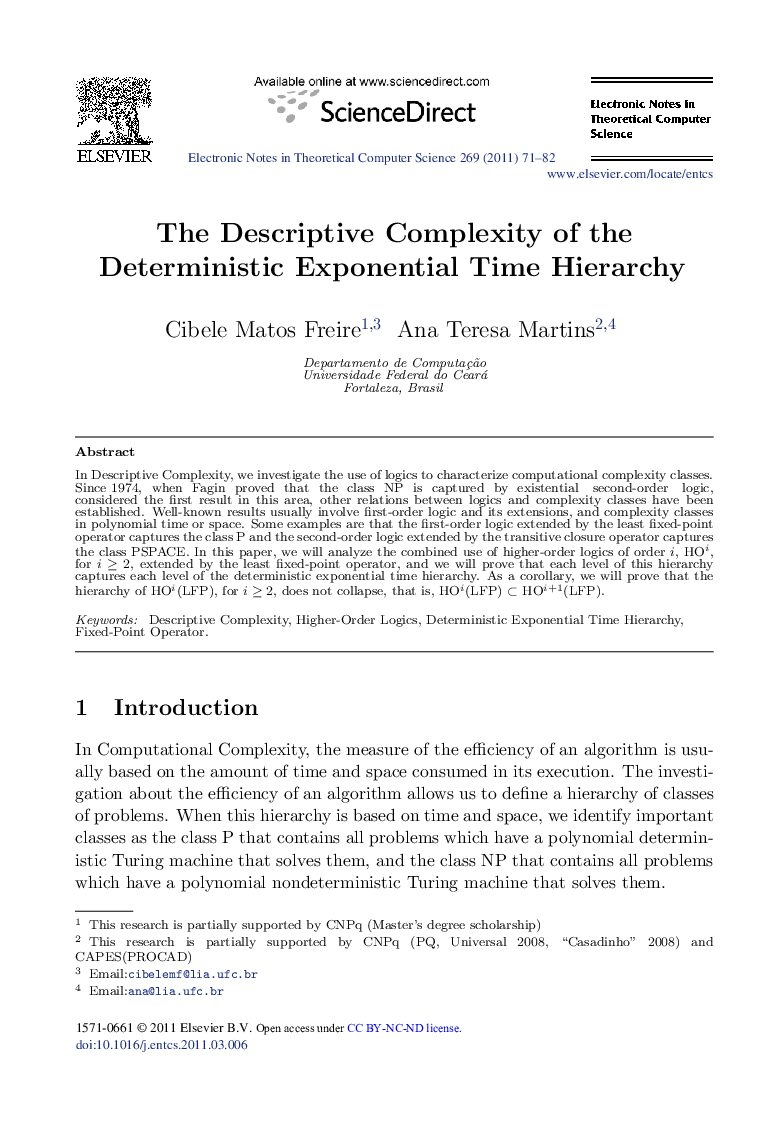| Article ID | Journal | Published Year | Pages | File Type |
|---|---|---|---|---|
| 421597 | Electronic Notes in Theoretical Computer Science | 2011 | 12 Pages |
In Descriptive Complexity, we investigate the use of logics to characterize computational complexity classes. Since 1974, when Fagin proved that the class NP is captured by existential second-order logic, considered the first result in this area, other relations between logics and complexity classes have been established. Well-known results usually involve first-order logic and its extensions, and complexity classes in polynomial time or space. Some examples are that the first-order logic extended by the least fixed-point operator captures the class P and the second-order logic extended by the transitive closure operator captures the class PSPACE. In this paper, we will analyze the combined use of higher-order logics of order i, HOi, for i⩾2, extended by the least fixed-point operator, and we will prove that each level of this hierarchy captures each level of the deterministic exponential time hierarchy. As a corollary, we will prove that the hierarchy of HOi(LFP), for i⩾2, does not collapse, that is, HOi(LFP)⊂HOi+1(LFP).
